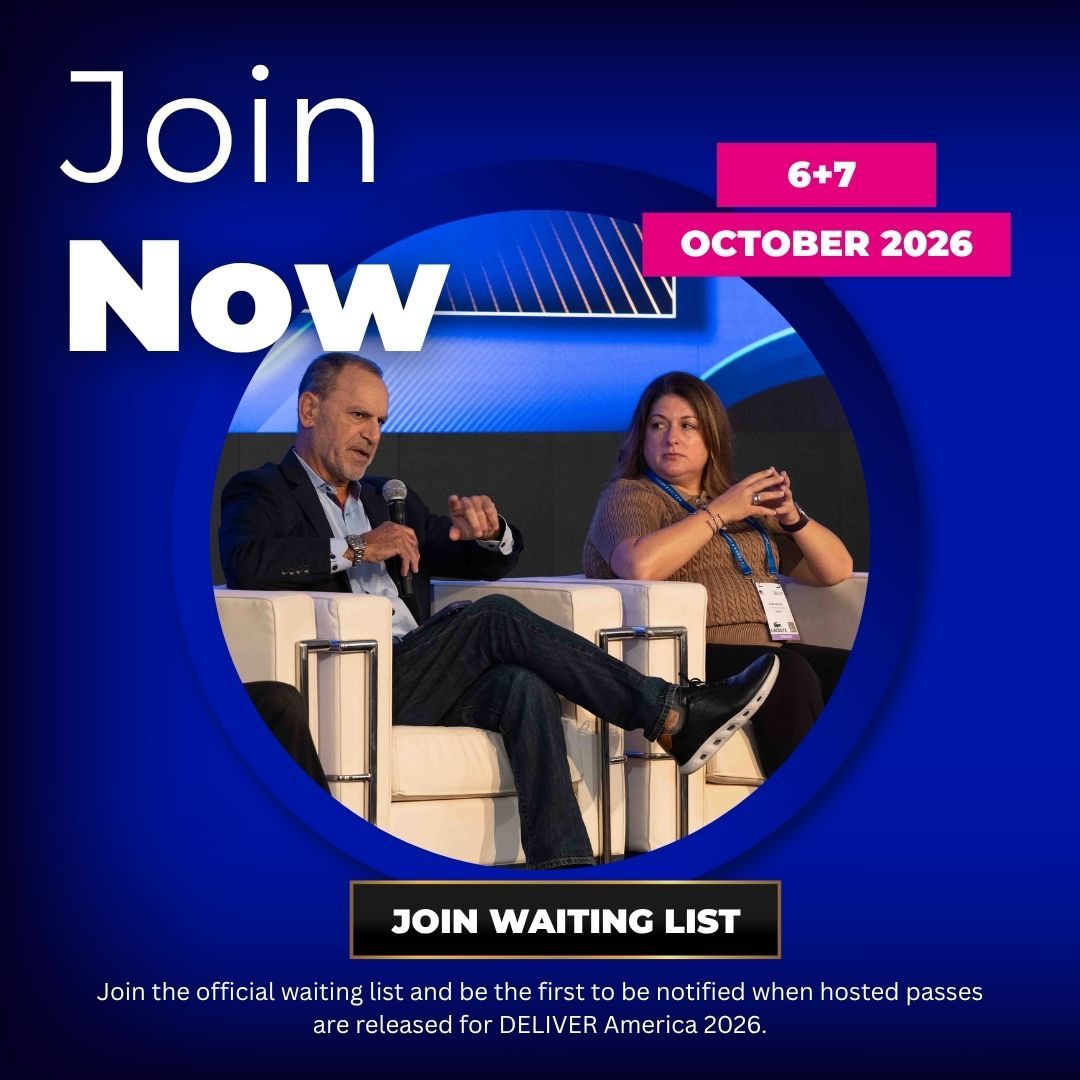Winning Gen Z: Building a Supply Chain for the Next Generation
Understanding a Generation That Buys Values, Not Just Products
Opal Portis, Vice President of Supply Chain at Fabletics, took the DELIVER America 2025 stage with a bold message: supply chains aren’t just about moving goods — they’re about earning trust.
Speaking to an audience of logistics leaders, Portis explored how Fabletics has re-engineered its operations to meet the expectations of a new kind of consumer — Gen Z, the first generation that buys based on proof, not promises.
“Gen Z doesn’t just want to buy products,” Portis said. “They want to buy proof — proof that it was made responsibly, delivered fast, and that the company stands for something.”
From implementing RFID to connecting sustainability data across its global network, Portis outlined how Fabletics is using technology to humanize commerce and redefine brand loyalty.
Gen Z’s New Supply Chain Rules
Portis began by framing what makes this generation unique. These consumers grew up in a world of instant information and global awareness. They expect speed, transparency, and accountability as baseline standards.
“If it’s not fast, it’s forgotten,” she said.
Citing McKinsey research, she noted that nearly 40% of Gen Z and millennials consider environmental impact a critical factor when purchasing fashion — double the rate of older generations.
To them, price and style matter, but so do speed, values, and verification.
“They ask: how fast did my product get here? Who made it? Were they treated fairly? What footprint did it leave?” Portis said.
That level of inquiry, she added, demands more than marketing — it demands measurable transparency, both for consumers and regulators.
“Transparency isn’t optional anymore,” she said. “It’s a prerequisite for participation in the market.”
From Compliance to Competitive Advantage
Global legislation — from California’s Climate Disclosure Act (SB 261) to the EU’s Digital Product Passport — is accelerating transparency expectations.
But for Portis, the real opportunity lies beyond compliance.
“The challenge isn’t collecting data — it’s connecting it,” she said. “Transparency shouldn’t just meet regulations. It should build competitive advantage — improving quality, speed, and trust.”
At Fabletics, this vision began with a digital transformation built around RFID (Radio Frequency Identification).
The company rolled out RFID across more than 100 stores, giving each garment a digital identity. What started as an inventory control project quickly became a customer experience revolution.
“RFID didn’t just help us count products — it helped us connect with our customers,” Portis explained. “They can see when items are in stock, when they’ll arrive, and where they’ve traveled across the supply chain.”
The Last Mile Becomes a Brand Experience
Portis described how the convergence of RFID, predictive analytics, and new delivery models is reshaping the last mile into a branded experience.
“We’re not talking about transactional fulfillment anymore,” she said. “We’re talking about the experience of delivery — same-day, curbside pickup, lockers, even bikes.”
She illustrated with a vivid scenario:
A Gen Z shopper walks into a Fabletics store on a Saturday afternoon, finds a pair of leggings out of stock, and leaves for brunch.
Behind the scenes, the store associate uses real-time RFID data to locate that exact pair across the entire network — and the leggings are delivered to a locker or doorstep before brunch ends.
“To the customer, that’s normal,” Portis said. “To us, it took data integration, RFID, predictive models, and last-mile coordination to make that seamless.”
This isn’t about logistics, she emphasized — it’s about trust.
RFID as the Backbone of Visibility
RFID’s role goes far beyond product tracking. It’s becoming the early warning system of Fabletics’ supply chain.
“Instead of just knowing we have 100 products, we know which 100 products,” Portis said. “We can see what’s in the front of the store versus the back. If there’s a problem with a particular item, we can trace it to the exact factory that made it.”
That level of granularity enables predictive quality control and operational agility — key differentiators in fast-moving fashion.
And when RFID data links to sustainability metrics, it becomes a tool for climate accountability, too.
“We can trace where the cotton was picked, how it was processed, and where it was manufactured,” she said. “We can track overproduction, material issues, even enable resale and recycling programs. Every tag tells a story.”
Meeting Growth with Responsibility
Portis reflected on Fabletics’ pandemic-era expansion, when demand for athleisure exploded. The company’s global network had to adapt overnight — without sacrificing visibility or responsibility.
“Everyone was at home, wearing leggings. Growth was rapid, and the network was complex,” she recalled. “We needed a faster and cleaner supply chain.”
Starting with store-level RFID tagging, Fabletics reduced stock count times, improved accuracy, and revealed hidden inefficiencies. The transformation evolved from an operational fix into a strategic advantage.
“RFID turned into a mirror,” Portis said. “It showed us where we could be better.”
The Data-Connected Future
Looking ahead, Portis envisions a fully connected supply chain where sustainability and speed coexist — one in which every SKU, supplier, and shipment is part of a single ecosystem of truth.
She painted a vivid picture of viral demand, sparked by celebrity influencer Khloé Kardashian.
“When Khloé goes viral, demand spikes instantly,” she said. “But now, we know where every pair of leggings is. We can fulfill from stores, from fulfillment centers, from anywhere — and deliver fast using bikes, lockers, or couriers.”
For Portis, this isn’t just a vision of efficiency; it’s a model of trust.
“None of these concepts are new,” she said. “The key is connecting the data. Every tag tells the story of your brand — from fabric to factory to the customer’s hands.”
Lessons from DELIVER America
Opal Portis’ message resonated beyond Fabletics: the future of retail supply chains depends on connected truth — the ability to unify sustainability, speed, and storytelling through data.
“Gen Z doesn’t separate ethics from experience,” she concluded. “They expect both. And if you can connect the dots, you’ll win their trust — and their loyalty.”
Her closing insight captured the essence of modern logistics leadership: building not just faster networks, but smarter, cleaner, and more transparent ones — where every product becomes a living narrative of purpose and precision.


